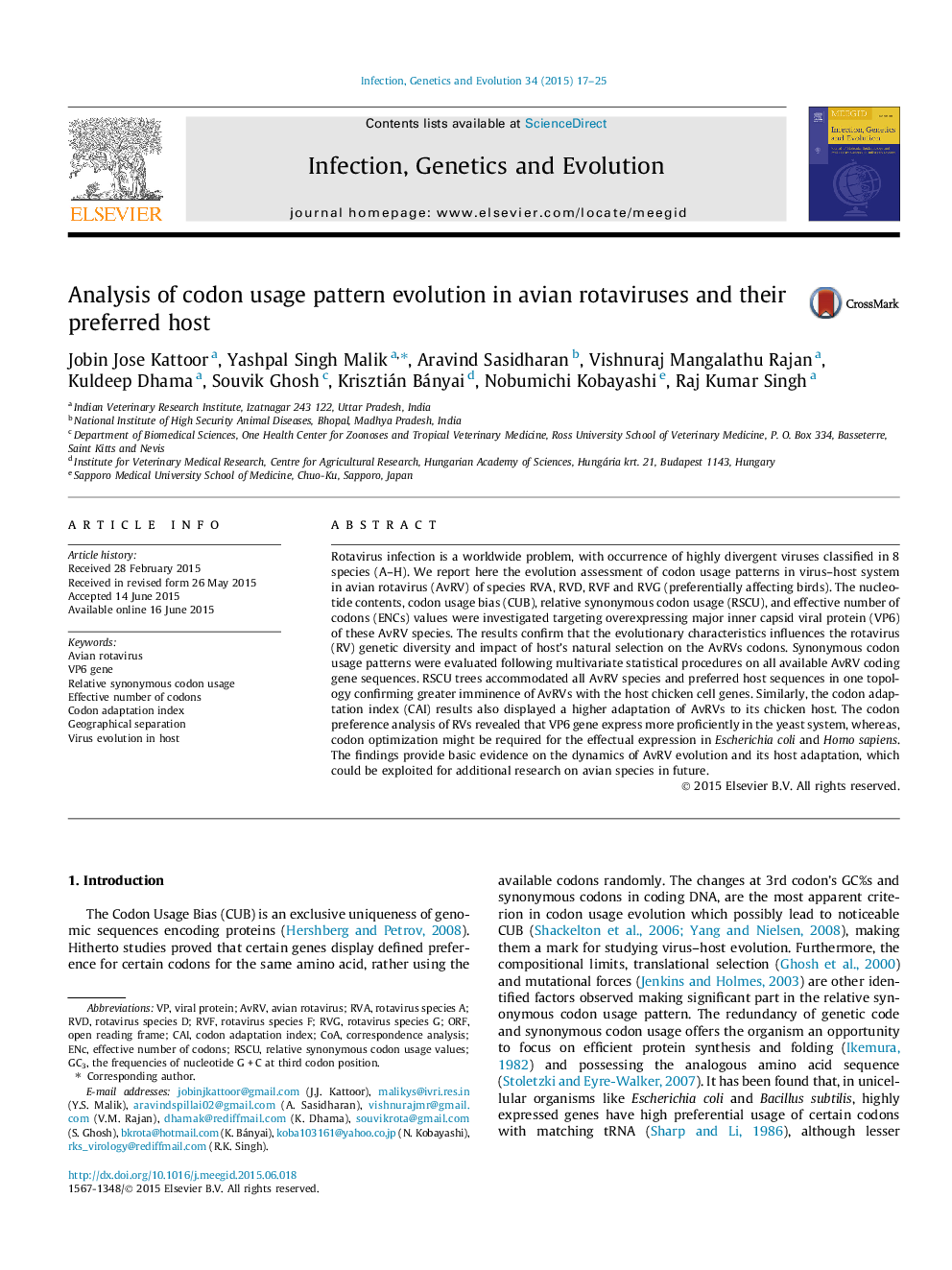| کد مقاله | کد نشریه | سال انتشار | مقاله انگلیسی | نسخه تمام متن |
|---|---|---|---|---|
| 5908957 | 1570169 | 2015 | 9 صفحه PDF | دانلود رایگان |
- RSCU clustering accommodated all AvRV species (RVA, RVD, RVF & RVG) with chicken host sequences in a single cluster.
- Values over 0.5 of CAI also endorsed higher adaptation of AvRVs to its chicken host.
- CoA-RSCU results represented a relationship between country of origin and AvRV gene composition.
Rotavirus infection is a worldwide problem, with occurrence of highly divergent viruses classified in 8 species (A-H). We report here the evolution assessment of codon usage patterns in virus-host system in avian rotavirus (AvRV) of species RVA, RVD, RVF and RVG (preferentially affecting birds). The nucleotide contents, codon usage bias (CUB), relative synonymous codon usage (RSCU), and effective number of codons (ENCs) values were investigated targeting overexpressing major inner capsid viral protein (VP6) of these AvRV species. The results confirm that the evolutionary characteristics influences the rotavirus (RV) genetic diversity and impact of host's natural selection on the AvRVs codons. Synonymous codon usage patterns were evaluated following multivariate statistical procedures on all available AvRV coding gene sequences. RSCU trees accommodated all AvRV species and preferred host sequences in one topology confirming greater imminence of AvRVs with the host chicken cell genes. Similarly, the codon adaptation index (CAI) results also displayed a higher adaptation of AvRVs to its chicken host. The codon preference analysis of RVs revealed that VP6 gene express more proficiently in the yeast system, whereas, codon optimization might be required for the effectual expression in Escherichia coli and Homo sapiens. The findings provide basic evidence on the dynamics of AvRV evolution and its host adaptation, which could be exploited for additional research on avian species in future.
Journal: Infection, Genetics and Evolution - Volume 34, August 2015, Pages 17-25
